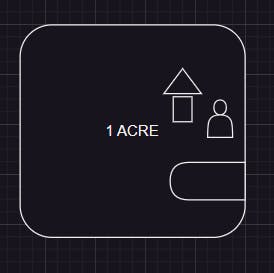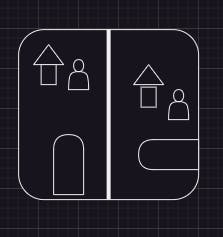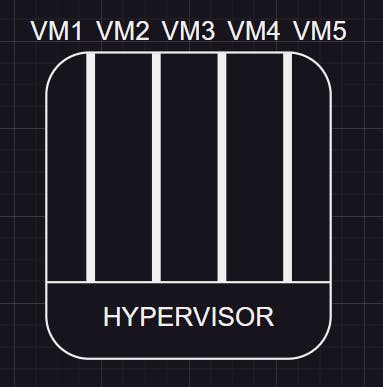Imagine you have a plane land of 1 Acre and you built a house around it and live with your family members. You are utilizing all of its resources, built a park for kids and enjoying the 1 acre land.

One day you realized you can live happily only using 1/2 part of it. The other half is unused. So to increase efficiency of the land, you built one more house, one more park in the rest of the land and set it for rent. By this approach, your comfort hasn't changed. The activities on the other side of the land are not interfering with your own territory. They have their own resources. Now the land is being used efficiently.

The virtualization world works in the same manner:
Imagine you have developed an E-commerce app; call it "SHOP@xyz" and want to make it available to the rest of the world. So you purchased a total of 5 servers of different sizes for 5 different development teams and deployed SHOP@xyz in the Servers

One thing you realized the total resources used by the app is not more than 4gb memory and 4CPU but is deployed on a 100GB and 100CPU server which is wasting more than 90% of the resources.
Also, the other servers allocated to different development teams are inefficiently using the server.
In order to solve this resource wastage issue, concept of virtualization is introduced.
Here, a software "HYPERVISOR" is installed on a bare machine which make logical partition on one physical server. So total 5 virtual servers are created on one single server. So logical partitioning is done to increase the efficiency of the server.

Top Hypervisors: VMware, Xen
Now Team1 to Team5 can use the VMs on a single machine.
Here virtual environments are created that functions as a virtual computer system. These virtual environments has their own CPU and Memory. One VM is not dependent on another VM for hardware, CPU or memory. Same virtualization concept is followed by Amazon, Microsoft and other Cloud Service Companies.
Take Amazon for example:
They purchased a land in Mumbai to create a data center.
Install physical servers on the land.
Then through hypervisors, they install hundreds, thousands or millions of virtual servers.
When user makes a request to Amazon and select a region, like 1 EC2 instance, the request is sent to one of the data centers and on one of the physical servers, a VM will be created.

